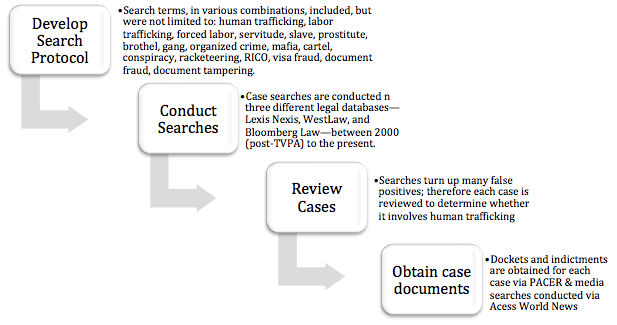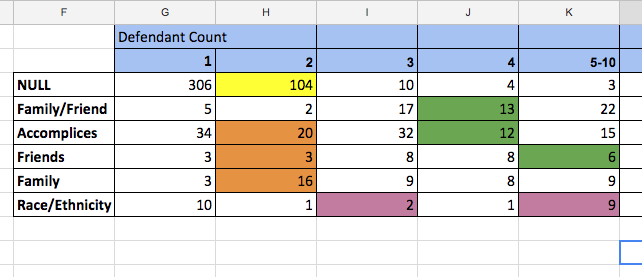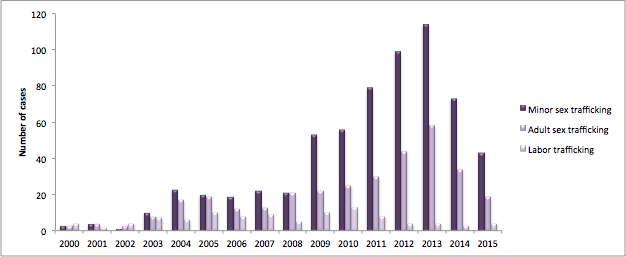Methodology
- 1. Collect
- 2. Code
- 3. Analyze
- 4. Visualize

Collect
Case collection is a four-step process. The first step is a comprehensive case search protocol that includes key terms in order to yield searches with most number of human trafficking cases with the least number of false positive search results. The case searches are conducted across several different legal search databases. Each case is then reviewed to determine whether it can be classified as human trafficking. Finally, we obtain case documents for each human trafficking case to prepare the case for coding.

Code
The coding process is methodical and thorough. Data from the case records and media sources are culled to code key information at the case-level and defendant-level. Case-level information includes type of trafficking, victim characteristics, and geospatial information. Defendant-level data includes demographic background of defendants, as well as their charge and sentencing details.

Analyze
The data collected is then analyzed to answer specific research questions. The analytical method is dictated by the specific research question, but includes descriptive statistics and various econometric analyses. The analyses are made available in the data narratives presented on the website. There are narratives available regarding what the data say about the type of trafficking, the victims, the prosecutions, and the defendants.

Visualize
In order to best communicate the data narratives, the research team designs static and interactive data visualizations that stakeholders can use for the purpose of education, training, and policymaking.